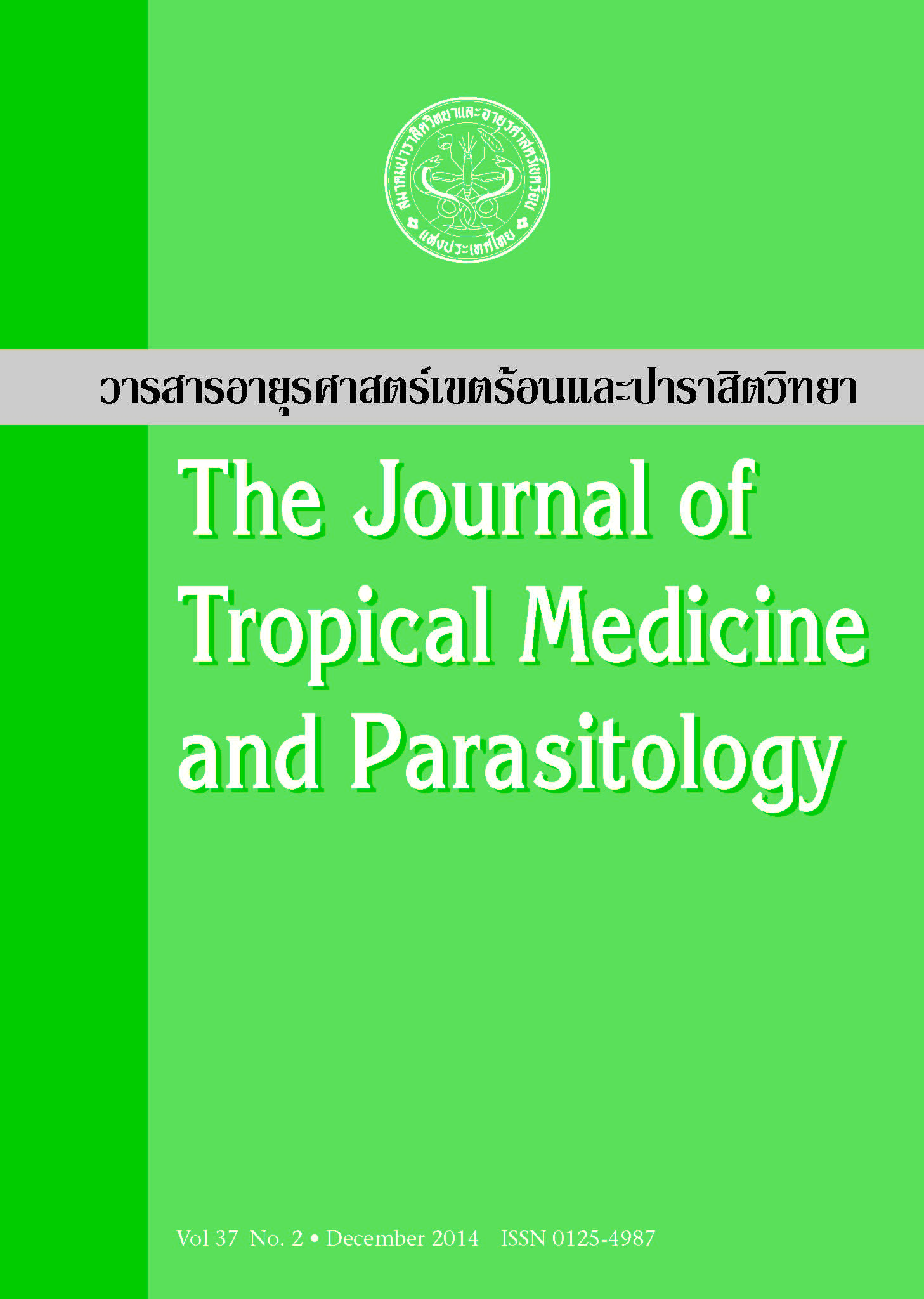Refractoriness of the natural malaria vector Culex quinquefasciatus to Plasmodium gallinaceum
Main Article Content
บทคัดย่อ
Development of effective strategies to control malaria transmission is an important issue in malaria research. This study aimed to investigate refractoriness of laboratory and field strains of the malaria vector Culex quinquefasciatus to the avian malaria parasite Plasmodium gallinaceum, a model of the human malaria disease. Transmission potential was determined by feeding batches of Cx. quinquefasciatus on P. gallinaceum infected chickens with 10% and 30% parasitemia. The mosquitoes were examined for percent infectivity and numbers of oocysts. Our study showed that when the mosquitoes were fed on the infected chickens with high parasitemia, the laboratory isolate of Cx. quinquefasciatus was more susceptible to P. gallinaceum transmission and produced significantly higher oocyst numbers than the field isolate. There were, however, no differences in term of the transmission potential and infectivity of the malaria parasite when the mosquitoes were allowed to feed on the P. gallinaceum-infected chickens with low parasitemia. In conclusion, our study demonstrated the differences in refractoriness of the natural vector Cx. quinquefasciatus to the transmission of the avian malaria P. gallinaceum, implying the existence of the natural pathogen resistance mechanisms in the Culex mosquito.
Article Details
ประเภทบทความ
Research

